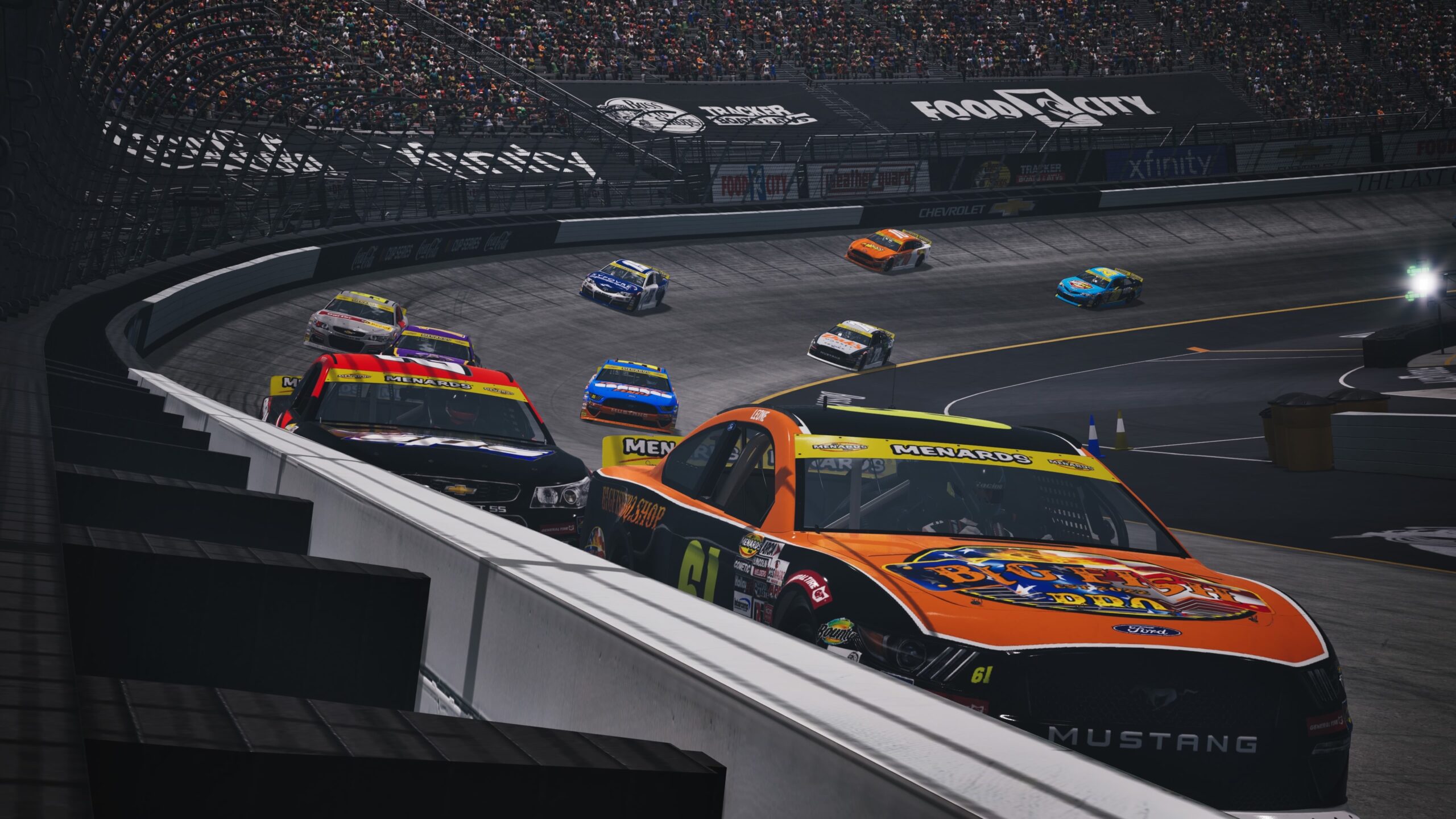Welcome to the official NASCAR 25 Career Mode walkthrough! In this series, we’ll give you the inside line on making the most out of your NASCAR 25 career, working your way up from a start-up team in the ARCA Menards Series to the upper echelons of the NASCAR Cup Series.
Today, we’re heading back to your Race Shop for an in-depth look at taking care of your vehicle, from repairing your existing parts to buying new ones.
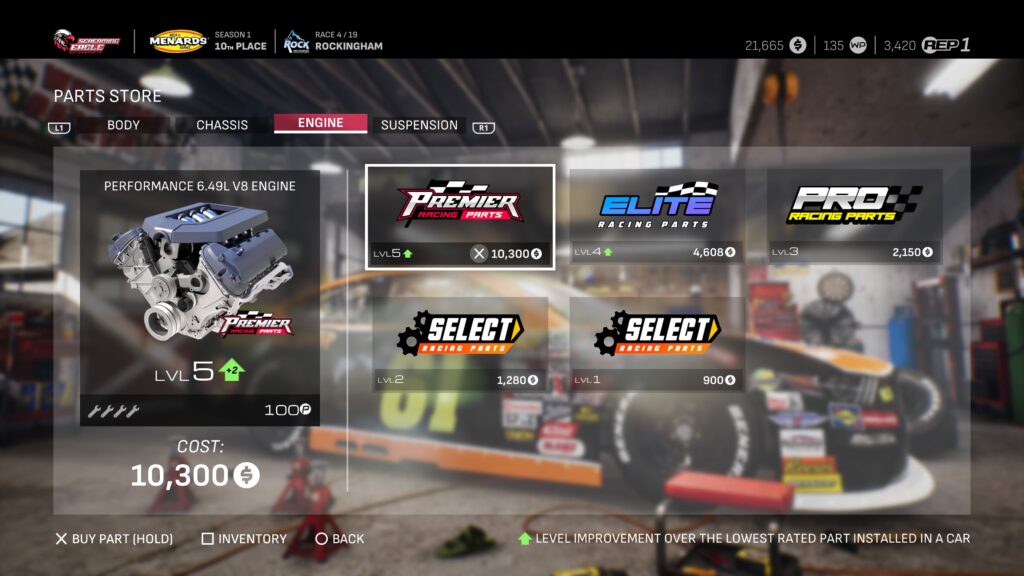
Buying New Parts
An important part of your race prep is heading to the Parts Shop. Each part on your car has a rating that ranges from 0 to 100, and these scores combine for your car’s overall rating. Your first ARCA car will start out with Level 1 parts in all four categories: Body, Chassis, Engine, and Suspension. Level 1 parts carry a maximum Performance rating of 40.
To get faster, you’ll want to upgrade each of these parts as much as you can, up to their top-end Level 5 versions. After buying an upgraded part, you’ll be asked if you’re ready to install it. (Chances are, you will be—good thing that even a poor finish at Daytona is usually lucrative enough to pick up something!)
As you browse through part options, make sure to note how many times a new part can be repaired, as noted by the wrench symbol. Higher-caliber parts can’t be repaired as many times as budget parts can, so they’re more likely to wear out first. When a part is marked as Worn, it can no longer be restored to full condition.
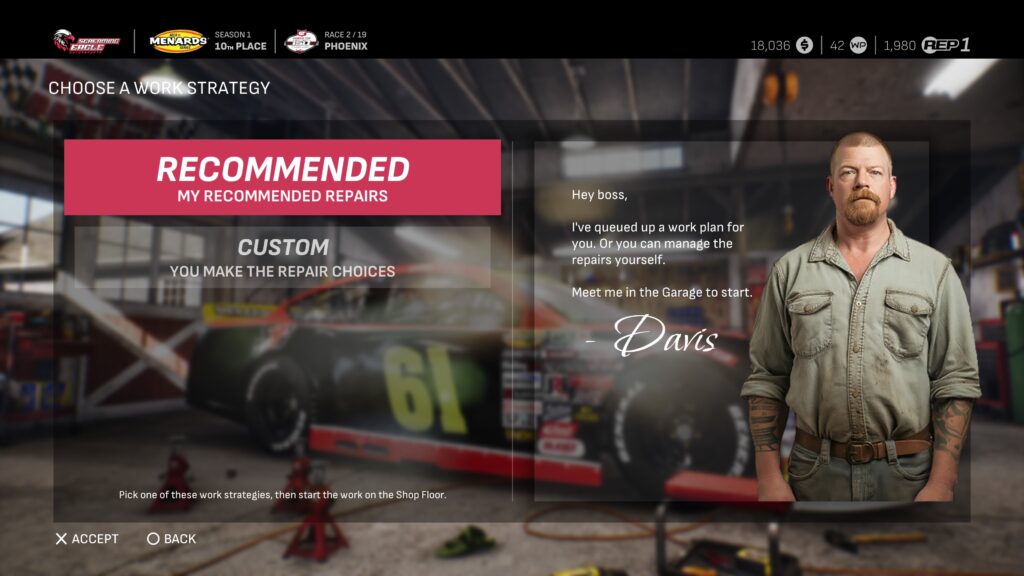
Performing Repairs
Next up is repairing your car, which can either be done with the recommended plan provided by your Crew Chief or customized based on the amount of Work Points your crew has available. The better your crew, the more work points you’ll have, which will come in handy if you finish a race with battered parts that you absolutely need the next time out.
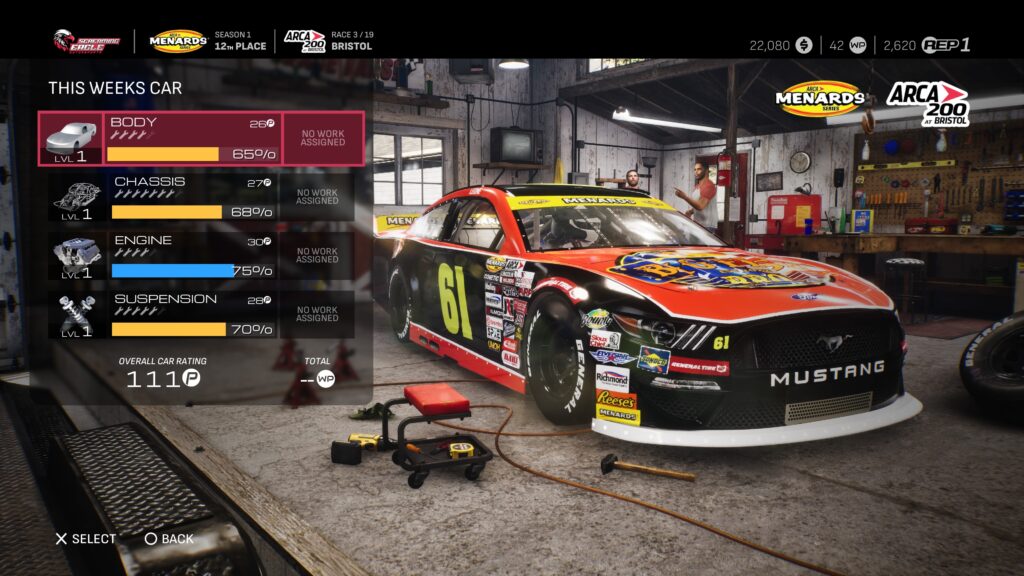
If you choose to assign Work Points manually, you’ll be able to select each of your parts individually to explore their repairs. Each part’s rating is determined by its level and condition, and these scores combine for your overall car rating. Parts that are still in good condition will have a blue bar, while yellow or red condition bars suggest that repairs are more crucial.
Parts can take three levels of repairs: minimum, medium, and maximum. The more abuse a part takes in the previous race, the more work it’ll need to get back to top condition. You can buy new parts both before and after doing your repairs for the week, but different circumstances will dictate which strategy is best for you.
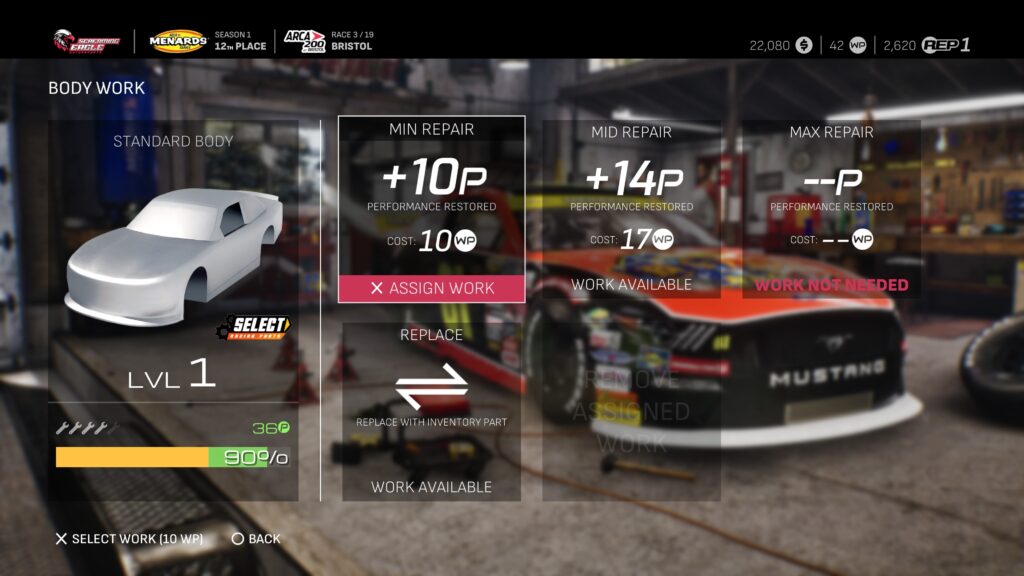
On one hand, buying and installing a new part won’t require you to spend Work Points, and you can use more of them on the parts in the worst condition. On the other, doing your repairs before buying a new part you want means that you can stash the repaired part in your Inventory as a backup for the future. Installing an Inventory part won’t cost you any Work Points, but you won’t be able to further improve its condition until after the next race.
Sometimes, there won’t be any way to repair all of your existing parts to 100% condition unless you go on a spending spree. If you’re not able (or willing) to change everything out, but feeling unsure about the best way to go about repairs, your Crew Chief’s recommended plan is a good place to start.
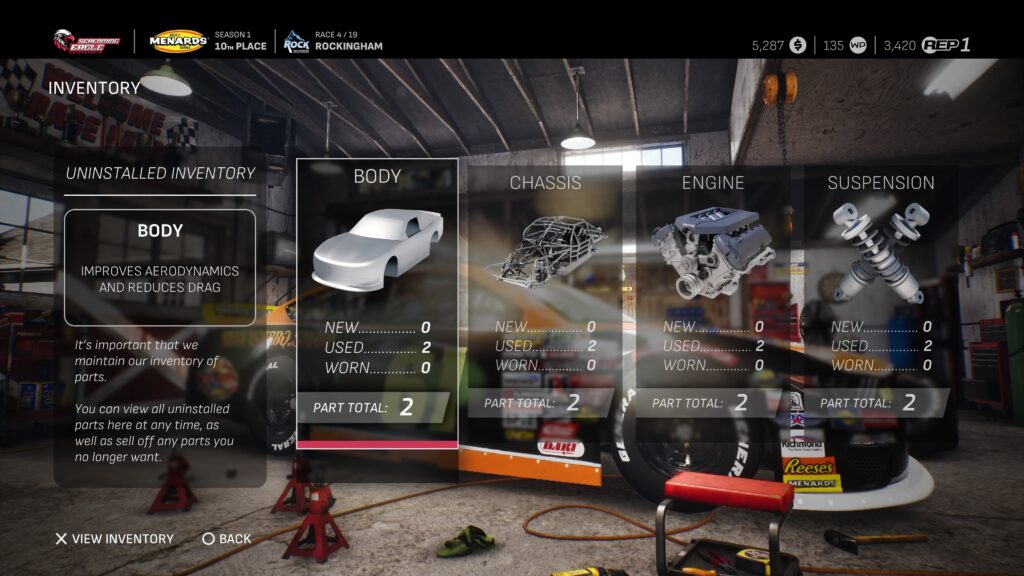
Managing Inventory
Upgrading your car is a costly exercise. Top-tier parts cost tens of thousands of dollars, and the only way to claim that much prize money in a single swoop is by taking a checkered flag. Big wins tend to come at a cost, though—you may have used some of your equipment up pretty thoroughly to take them. Check out the Schedule tab in the Race Shop to see how much money is on the line for each race win.
Even if you’ve already got top-tier parts across the board for your car, it’s important to keep buying new ones and building up your Inventory. If you’ve got another part ready to go in Inventory when your existing part is worn out, you’ll be all set for the next race. You can buy one part per level in each category per race week.
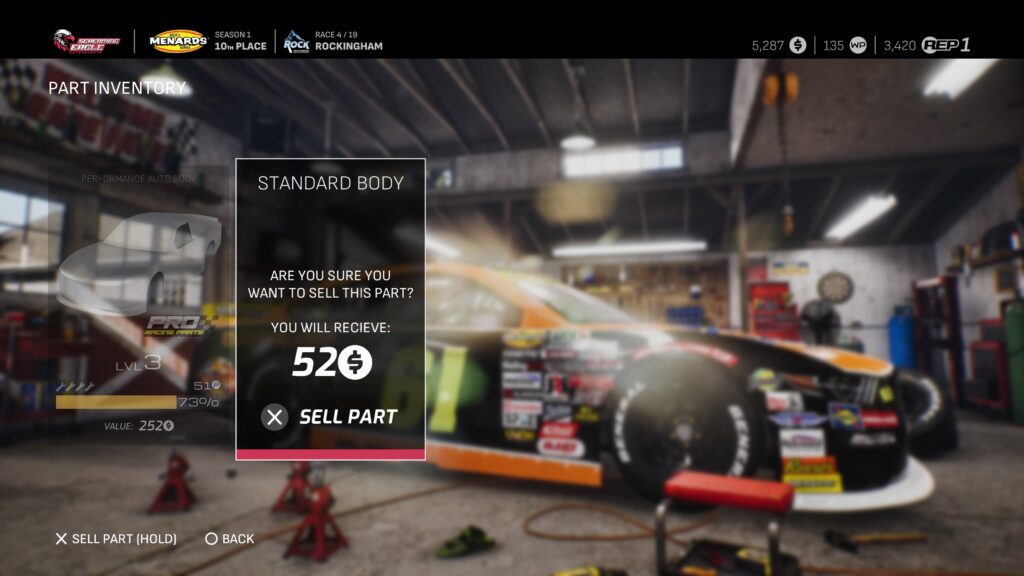
You can also sell parts you’re not using to recoup a little bit of money. What you’ll get back is determined by the part’s condition and how many more times it can be repaired. Worn parts can also be sold to clear out inventory space. If you’ve got the Work Points to spare, it can be worth fully repairing a part before you replace and sell it in order to take home a few extra bucks.
Looking for more help with NASCAR 25’s Career Mode? Click the tag below for all articles!

